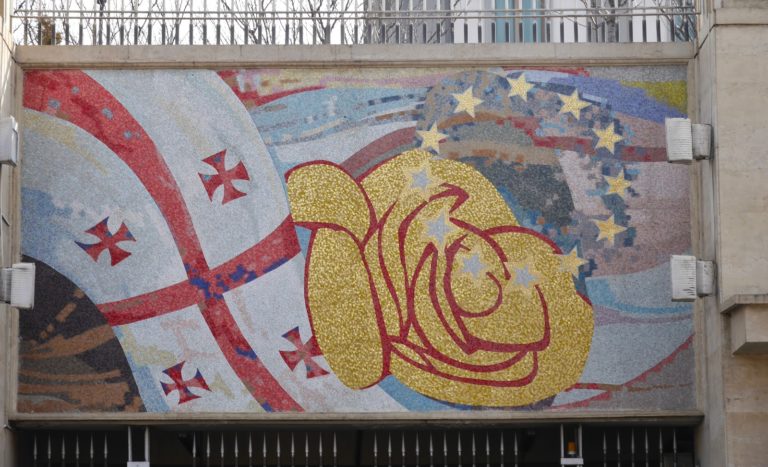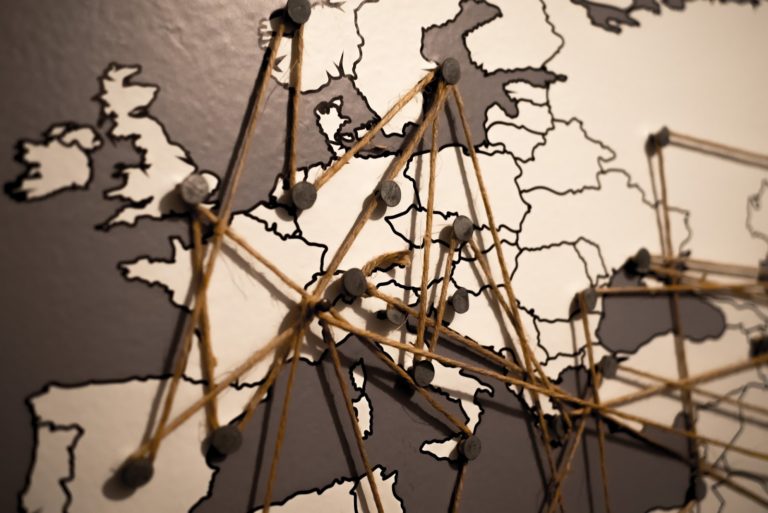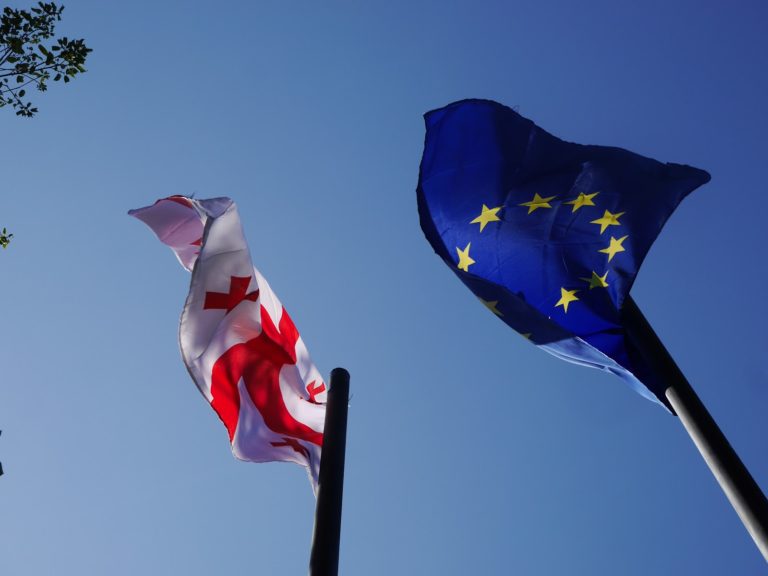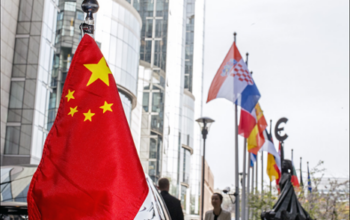“Borders” imply one clear line. You are either in front of it or behind it. But in reality, borders are not that simple. They change throughout time. They follow different ways, depending on who you ask. They are multidimensional: cultural, physical, religious and linguistic. A web of borders can be found in the South Caucasus region. By looking at Georgia’s relation to Europe, this article shows that borders and identities are constructed.
One question to start: On which continent do you think is Georgia? On the Georgian tourist website the country is presented as European, based on the Caucasus as a European mountain range. At the airport of the capital Tbilisi you are welcomed to a European country. However, in the Central and West European public consciousness few would name Georgia as European. This question is not as easy to answer as it sounds at first and it is an issue that questions the nature of borders.
Considering Georgia
Georgia is a country located in the South Caucasus next to the Black Sea. Like other countries in the region between the European and the Asian continent, it faces the question of belonging and orientation. And this question is not simple to answer, since it depends on many different factors: politics and alliances, cultural influence and traditions and the will of the citizens.

Historically, Georgia was under both European and Asian rule. Geographically, the Caucasus Mountains are commonly seen as the Southeastern border of Europe, which means that Georgia is topographically located in Asia. Politically, Georgia orients itself on Western democracies. It is among others a member of the Council of Europe and European Bank for Reconstruction and Development and is seeking to join the European Union (EU) and NATO. It also is part of the Asian Development Bank, but the ties to European states are closer. That counts also for the military sphere. The Rose Revolution 2003 marked the turn to a more pro-Western, Euro-Atlantic foreign policy. Culturally the country is closer to Europe and most Georgians identify themselves with Europe, not Asia.
I asked Georgians about how they feel about Georgia and Europe, and a man from Tbilisi told me: “Geographically speaking, the border of Europe goes on the south Caucasus. Historically speaking, few centuries ago we had strong connection with the European countries, even assigning their ambassadors; based on the ideology and Identity values, we are much more similar to Europe, rather than Asia. So yea, Georgia was as far as possible a part of Europe before and nowadays, indeed.”
However, Georgia’s culture has Asian origins as well and its music, architecture and food are a sign of this heritage. As it can be seen, Georgia is hanging in several dimension between the two continents.
Considering Europe

To know if Georgia belongs to Europe, we can turn around and ask where Europe ends. There is no universal definition of Europe but multiple interpretations. In geographical terms, we read about the Caucasus Mountains as its border earlier. In another understanding it is the river Aras, which would make Georgia part of Europe- which interpretation is the right one? When searching the history of Europe, it can be defined as building on the law of the Roman Empire and on Christianity. The Caucasus region was once part of the Roman Empire and they are some of the oldest Christian nations in the world. This again would imply the inclusion of Georgia to Europe.
After the Reformation, when Christianity, that served as a common ground for all the nations of the continent, became fragile, the name “Europe” became a diplomatic term. A term that did not include Georgia. The 17th century was a time of massive political changes on the continent: The Thirty Years’ War and the Peace of Westphalia arguably define our political system until today. The new concert of European nation states had the chance to defend and prove itself in the continuous Ottoman wars. While at times, the Ottoman Empire was seen as a European power, increasingly a border was drawn by the European states to its “Eastern neighbours”. The absence of natural borders made Europe feel the need of differentiating itself from others, be it in cultures or religions. This made up over time an European identity in contrast to others, especially Asian and Arabian identities.
In the 20th century a political idea emerged that is still upheld in the contemporary EU nations. Two aspects made up a new European consciousness: “‘Europeanism’, the sense of belonging to a centuries-old civilisation, and ‘Europeism’, the perception of an urgent need to ‘build Europe’ to end war.” Out of this the European Union was eventually formed. Often, when people talk about “Europe” they mean the EU, which does not make things easier. However, even this clear defined political organization carries a similar struggle as does the continent: an unfixed territory and constantly shifting borders. How can Europe be seen as one entity, when its political borders have been changed several times and through expansion its former neighbours are becoming a part of it?
Contemporary Europe is strongly connected to values: “Europe ends where the perception of the values are different from the European ones.” These values can be adopted, which means that the European territory is still up to change and growth: “Every state of this region […] is also able to add something new to the idea of European values and is somewhat connected to those shared ideas.”
So what do we learn from this about Georgia? It does not explain why Georgia is often not seen as European in Central Europe.

Who is making borders and why?
When constructs, for example borders, are made, it needs to be asked who is behind the construction and for what purpose. The uncertainty of defining Europe is at least also an advantage for the nations that determine the “European identity” and the norms that others have to comply with. It makes the definition of borders a strongly political question, since it is the basis for the inclusion or exclusion of countries. This is visible in frequent debates about European expansion, especially in the debates about a potential EU membership for Turkey. The uncertainties about Europe also mean uncertainty for the South Caucasus countries. Projects like the Eastern Partnership develop European values and build strong economic connections between EU institutions and Eastern countries like Georgia or Moldova, which are both backed by Romania as potential future EU member states.
Another citizen from Georgia’s capital said about his country: “I guess it’s more Europe than anything else and the main indicator, I would say, is culture, which is deeply rooted in Christianity and it matters. As [a] counter argument, one could say that Ethiopia is also [a] Christian nation but the country is in Africa. But that is more aberration. And of course it’s [a] matter of politics – Georgians want to be Europeans (mostly) and as it is on the edge of the Europa, there is [a] chance that they will build up [a] European nation and state one day”.
Why decide? Say yes to Eurasia
Georgia can be seen as having a dual identity. Georgia “could fit into either Europe or Asia, depending on which definition you use.” But why is there the need to put it into one of the two boxes, why Europe or Asia? “Like all other Caucasian people, the Georgians do not fit into any of the major categories of Asia or Europe. The Georgian language is not Semitic, indo-European, nor Turkic.” We can also see it as Eurasian or Caucasian, as one of its own kind.
Many borders exist- in our minds, on paper, or even in the physical world. But do we need them? What do they mean in everyday life? Who makes the borders? Who profits from them? Which one is the right one? Are there natural borders? … The question of Georgia opened up more questions about borders than it answered.
by Nina Kolarzik
Photo Credits
European connections, TheAndrasBarta
borderland, Free-Photos
Georgia street art & flags, Nina Kolarzik, All Rights Reserved










